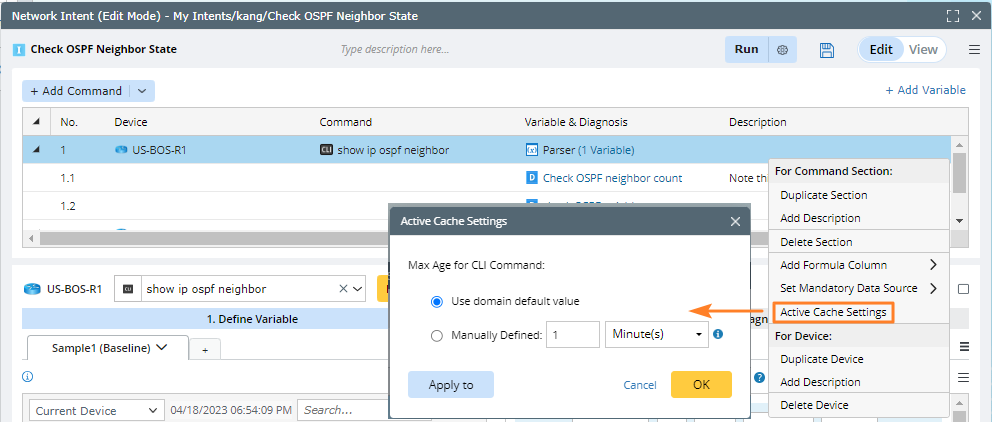Support Active Cache for Live Data as Data Source
Use Active Cache aims to safeguard network devices against excessive Telnet/SSH requests. This option is available for the Live Data data source setting in network intent execution/replication/decoding. Essentially, it ensures that live data retrieval from devices occurs only when cache data is unavailable or outdated. Furthermore, all live retrieved data is added/updated into a global Active Cache for future live data requests.
The Active Cache can be used:
- In high-frequency triggered diagnosis, the Active Cache effectively reduces redundant live data retrievals, preventing excessive strain on core devices or problematic devices.
- For the PAF dashboard, multiple dashboards can share active cache data to minimize the reliance on live data pulling.
- During interactive diagnosis, such as running intents (including auto-intents and quick intents), utilizing live data with active cache can protect network devices for:
- Multiple users working on similar issues can access required information faster.
- Devices are not excessively pulled by different intent executions.
- In big command cases, leveraging active cache instead of relying on long-time live access serves diagnostic needs more efficiently (e.g., show ip route of an internet route table).
The Active Cache currently only serves device CLI command data and device configuration files via CLI/API for now. It exclusively supports intent-related functions, excluding DVT/Qapp and others.
You can specify the maximum age of the CLI command/configuration file/API data in the intent definition, specifically at the device command section level:
- Use domain default value: Refers to the value defined in Advanced Settings of the current domain as below:

- Manually Defined: You can also customize the age manually for the current intent command section only.